6.4 Fracture pattern evaluation
Besides the absolute value of the joint strength (measured using a lap shear test or peel test), which differs depending on the test set-up and is described in this section, the nature of the fracture provides important information.
A distinction is made between amongst other things:
- A fracture between the adhesive and substrate: Adhesive fracture (adhesion)
- A fracture in the adhesive: Cohesive fracture (cohesion)
- A fracture in the substrate: Substrate fracture
- Various types of mixed fracture
- Material damage, delamination (e.g. for fibre reinforced plastics)
Types of fractures:





A cohesive fracture at strength values typical of adhesives* (→ technical data sheet) is an indication of a high-quality bonded joint. A near-substrate cohesive fracture typical of higher strength bonded joints is also acceptable provided the adhesive film remaining on the substrate is not too thin.
(Should normally be the case for flexible-elastic adhesives such as PUR, silicones, silane-modified adhesives)

An excellent bonded joint!
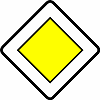
* Lower joint strength values may indicate, for example, inadequate adhesive curing or an abnormal mixing ratio for 2-C adhesives.
A pure adhesive fracture or fractures with some degree of adhesive fracture may be due to inadequate surface treatment or an incorrect choice of adhesive.
There are, however, high-strength adhesives (e.g. phenolic resin adhesives), which even show adhesive fracture under optimum conditions. This can be tolerated if good results are still obtained after ageing (only a slight strength decrease, no infiltration, no substrate corrosion).

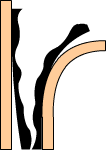

For adhesive fractures the substrate on which detachment occurs must also be documented.
If the bonded joint is more complex, for example if a primer was used, the boundary on which failure occurs must also be reported. The greater the number of boundaries, the more complicated this becomes.
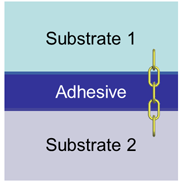
Possible fracture patterns:
- Cohesive fracture Substrate 1
- Adhesive fracture Adhesive – Substrate 1
- Cohesive fracture Adhesive
- Adhesive fracture Adhesive – Substrate 2
- Cohesive fracture Substrate 2
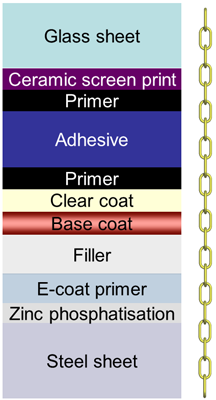
Possible fracture patterns:
1. Cohesive fracture Glass
2. …
3. …
usw.
21. Cohesive fracture Steel
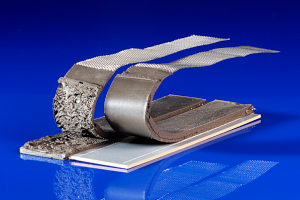
Source: Fraunhofer IFAM

Source: Fraunhofer IFAM
Types of fractures on subjecting a thick film bonded joint to a peel test:
Left: Cohesive fracture; Right: Adhesive fracture
Types of fractures for a lap shear test:
Left: Cohesive fracture; Middle: Mixed fracture; Right: Adhesive fracture
Fractures in the substrate provide no information about the strength of the bonded joint (→ Substrates undersized). They are however desirable under certain conditions when testing bonded components. An alternative would be to measure the adhesion using a peel test.



